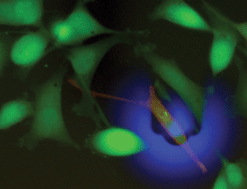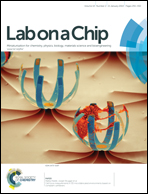Isolation of single mammalian cells from adherent cultures by fluidic force microscopy
Abstract
The physical separation of individual cells from cell populations for single-cell analysis and proliferation is of wide interest in biology and medicine. Today, single-cell isolation is routinely applied to non-adherent cells, though its application to cells grown on a substrate remains challenging. In this report, a versatile approach for isolating single HeLa cells directly from their culture dish is presented. Fluidic force microscopy is first used to detach the targeted cell(s) via the tunable delivery of trypsin, thereby achieving cellular detachment with single-cell resolution. The cell is then trapped by the microfluidic probe via gentle aspiration, displaced with micrometric precision and either transferred onto a new substrate or deposited into a microwell. An optimised non-fouling coating ensures fully reversible cell capture and the potential for serial isolation of multiple cells with 100% successful transfer rate (n = 130) and a survival rate of greater than 95%. By providing an efficient means for isolating targeted adherent cells, the described approach offers exciting possibilities for biomedical research.


 Please wait while we load your content...
Please wait while we load your content...